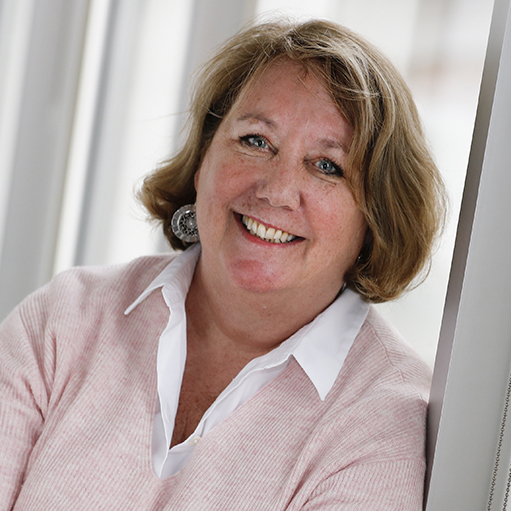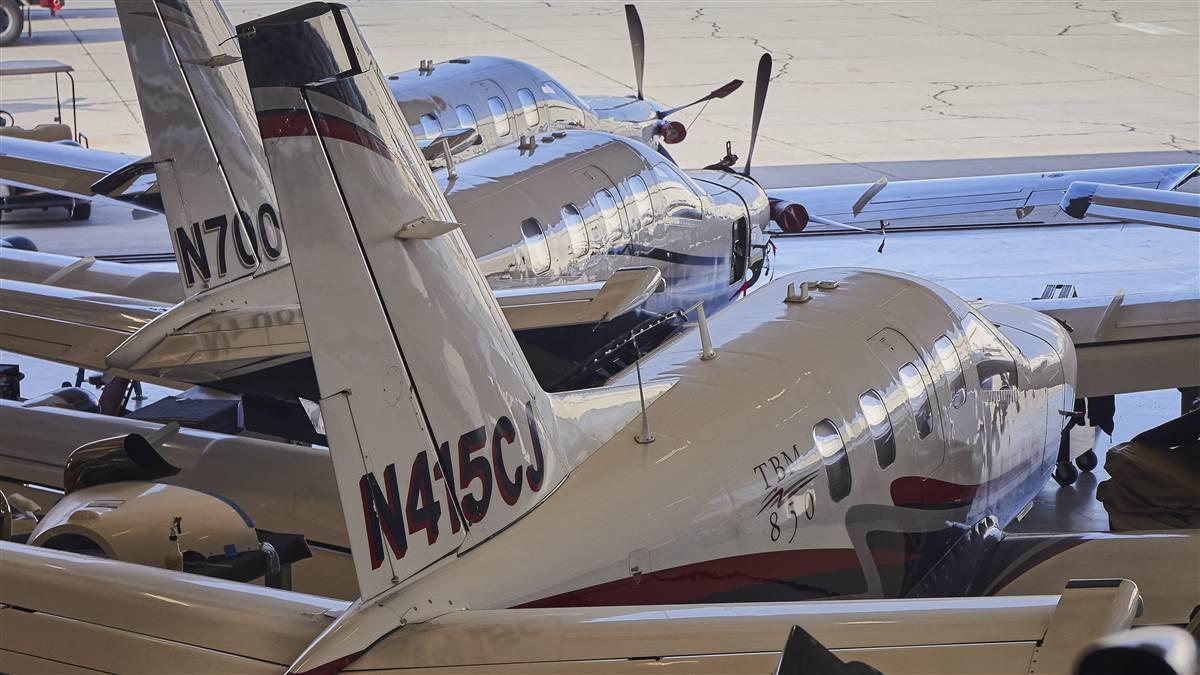The new face of aircraft sales
What it takes to sell a TBM

How did you get into the aviation industry?
When I graduated college I scored a great job at a leading biotech company. However, I didn’t love it. I knew that I wanted to do something in aviation, and after a few years I made a choice. It was one of the hardest choices I have ever made. At the time the nation was in the midst of the recession, and I was grateful to have a job, let alone at a company that many people would kill get their foot in the door. Everyone in my life told me I was crazy, including my family and friends. I applied for a marketing position at AVEX. At that time, I had no idea what an amazing journey I was in for. I am fortunate that the director of sales and owner of AVEX is the foremost expert in the TBM world; he has sold more TBMs than anyone and has catered his business to solely focusing on the TBM product. I am lucky to call Terry Winson my boss, my mentor, and a friend.
Describe a typical day
Every day is different, and every day is exciting. This job is constantly bringing different challenges and introducing extraordinary people into my life. There are a few things I can count on: My inbox is usually at capacity with hundreds of emails a day, the phone stays very busy, and being able to manage my time can make or break deals.
The job also requires a high-level understanding of a wide variety of disciplines including negotiation, pricing, market research, cash flow analysis, financial knowledge, relationship management, technical information, comparative analytics, and written and verbal communication skills. Not the least of which is listening—fully understanding your customer, where they are coming from, what their mission is, and how they will use the airplane are all things that are critical to providing a customer with the best possible service.
On a given day, one could expect any combination of tasks including operating and performance comparisons, webinars, hosting a customer for an orientation on the airplane, fielding calls and emails, visiting with existing customers, traveling to trade shows, brainstorming marketing campaigns, event planning, logistics for a close, staging a delivery, and entertainment such as taking a customer out for a congratulatory dinner.
Who are your usual customers?
As far as demographics are concerned, they are CEOs or owners of companies who do a lot of business travel but are also pilots and prefer to fly themselves. They come from a wide [variety] of backgrounds including high-tech leaders, farmers, ranchers, lawyers, construction, doctors, engineers, professors, venture capitalists, and start-ups. A majority of our owners are mature buyers coming up from single-engine piston aircraft. We see lots of Cirrus, Bonanza, Mooney, Mirage, and Meridian owners moving into this product for increased speed, range, payload, reliability, and versatility.
There is a commonality in our customers that goes beyond demographics alone. Most of them are self-made, hard workers who have dreamed for a long time about owning this airplane, and being able to acquire it transcends from airplane ownership to a culmination of their hard work and realizing a dream. For me, it is an honor to be a part of that process.
I am fortunate to be able to access some of the most influential people in the world, and they are so forthcoming and generous with their feedback, advice, and gratitude. We are lucky to be able to learn and glean insight from the people we serve.
How do you “prescreen” prospective buyers so they aren’t wasting your time?
In this industry everyone that you talk to is connected to other pilots and if what you are putting out there is valuable, word travels. At trade shows it is not uncommon for old-timers to come up and ask questions about the build and the systems on the airplane; you can tell many of them are veterans or had a career in aviation in a previous life, and they genuinely enjoy talking to someone about aviation. None of them are qualified to make a purchase like this, but that does not mean they are a waste of time. It doesn’t hurt to answer their questions and listen to their flying stories. My time and respect is literally the least courtesy I can afford them. So many pilots take for granted all the generational knowledge that has been passed down. If someone is a pilot or even has an interest in aviation I am happy to spend time with them and excited to talk to them about TBMs for as long as they will listen. More often than not, both of us will take something valuable away from the conversation.
How long does it take for a sales transaction?
They vary. Sometimes they happen quickly, but more often than not it is a long process. We have buyers who we have been talking to for more than five years that eventually materialize into buyers. We don’t mind waiting; we want to sell a customer an airplane when the time is right for them. Our goal is for a customer to be happy with the product and keep it for a long time. When someone buys an airplane at the right time, when it makes sense for them financially, and when they have a mission to fill, they end up satisfied with the airplane and have longevity in the product.
“There are a few things I can count on: My inbox is usually at capacity with hundreds of emails a day, the phone stays very busy, and being able to manage my time can make or break deals.”What does a luxury/business aviation salesperson make a year?
How many aircraft do you sell in a year?
It depends on many different variables including what type of airplane you are selling and what kind of volume you do, et cetera. Aviation is also very cyclical. Right now the stock market is up and the economy is thriving and aircraft sales are healthy. When I was first transitioning into sales, Terry, the owner of AVEX, once said something that resonated with me. He said, “Aircraft sales is a job where if you work really hard you can make a good living, but if you are not a hard worker you will starve.”
Typically, I sell about 14 airplanes a year, but it is a team effort. As a company AVEX is the global leader in TBM sales; our sales team sold 33 percent of the preowned TBMs in the global marketplace last year and is also a leader in new TBM sales.
What is your favorite part of the job?
There are so many things that I love about this job. I love the fact that I get to wake up every day and earn a living doing something that I am passionate about. I love the people that I am surrounded by every day.
One of my absolute favorite parts of the job is the day when the customer takes delivery of their new TBM. For many customers it is something that they have dreamed about since the first 700A model debuted 26 years ago. Accomplishing that dream often entails a lot of hard work and when the dream is finally realized, it is an indescribable feeling. It is a distinct and utmost honor to be a part of that process and be able to share that feeling with my customers.
Email [email protected]

 More than 70 sleek-nosed French turboprops are gleaming on the ramp in the California sun. It’s as if an extended family of aircraft has assembled for a reunion and each family member is trying to outdo the others with its high-end paint job and sexy interior.
More than 70 sleek-nosed French turboprops are gleaming on the ramp in the California sun. It’s as if an extended family of aircraft has assembled for a reunion and each family member is trying to outdo the others with its high-end paint job and sexy interior.